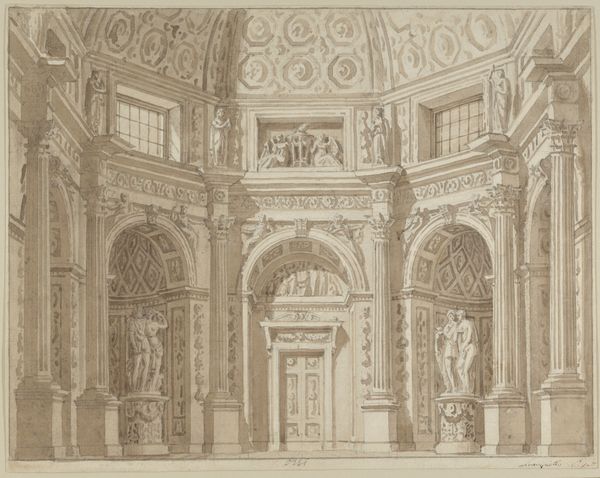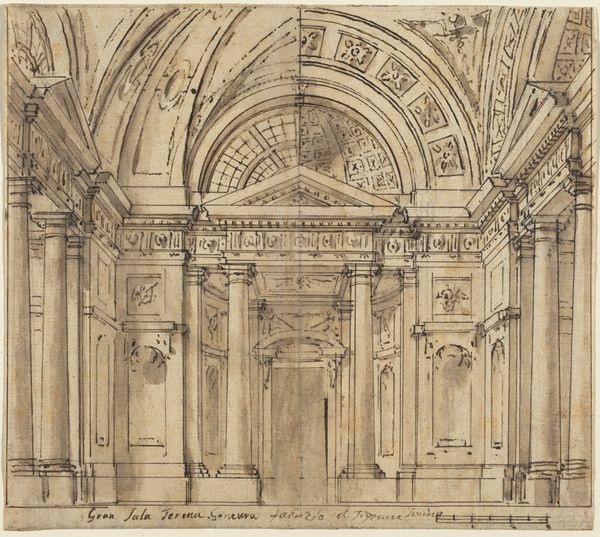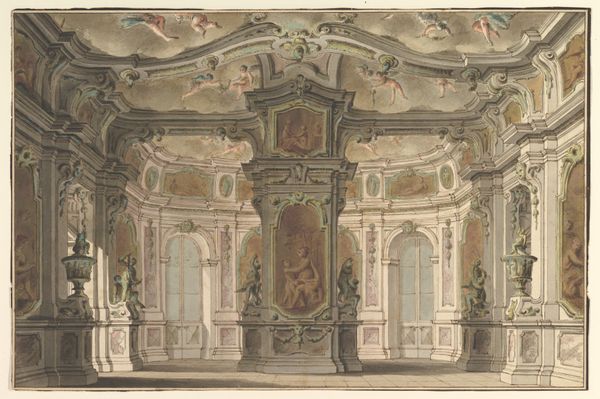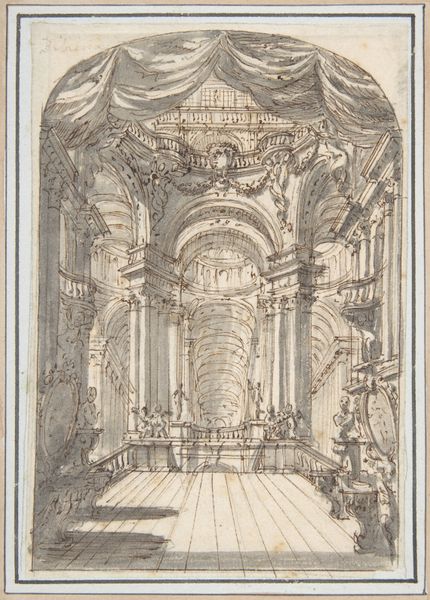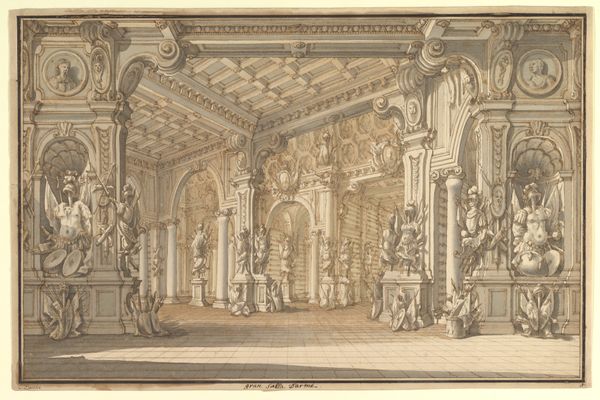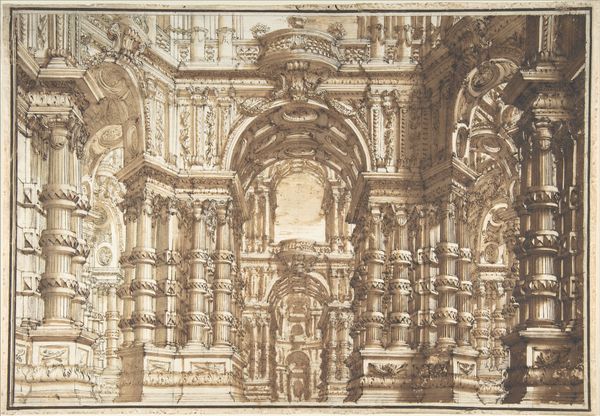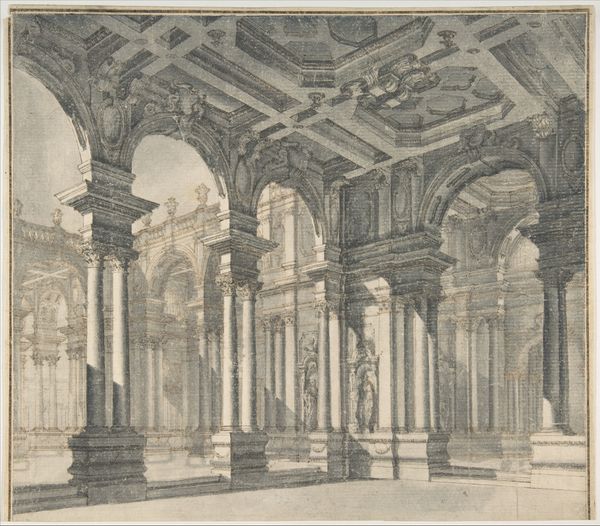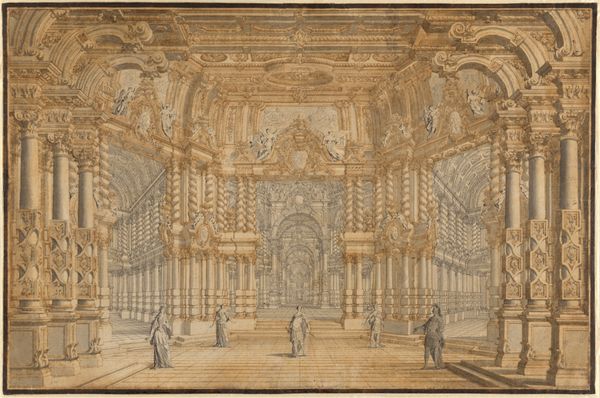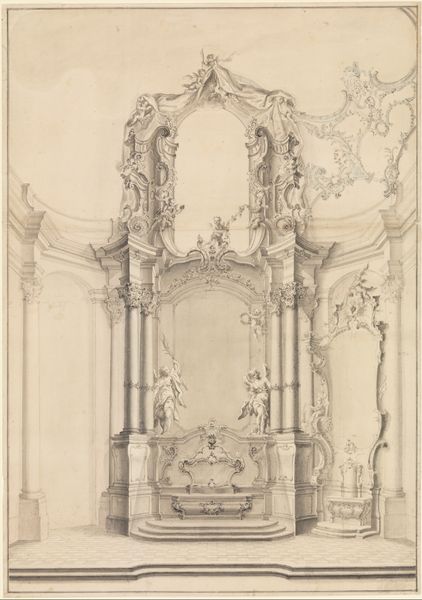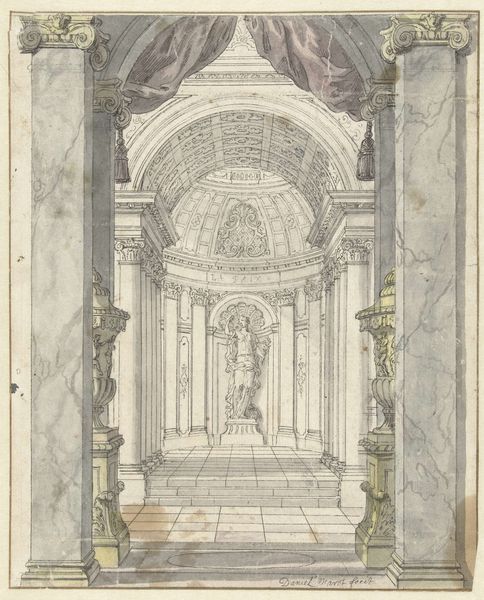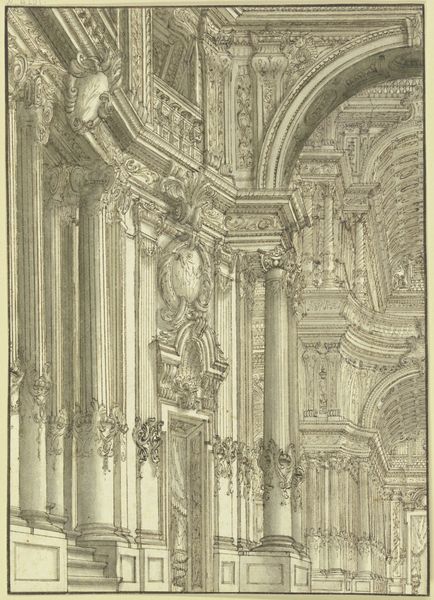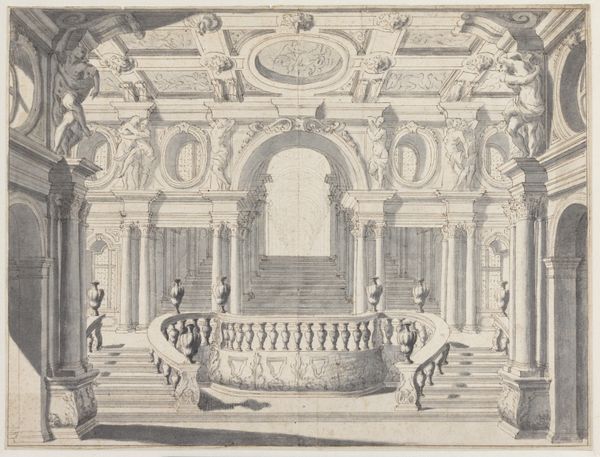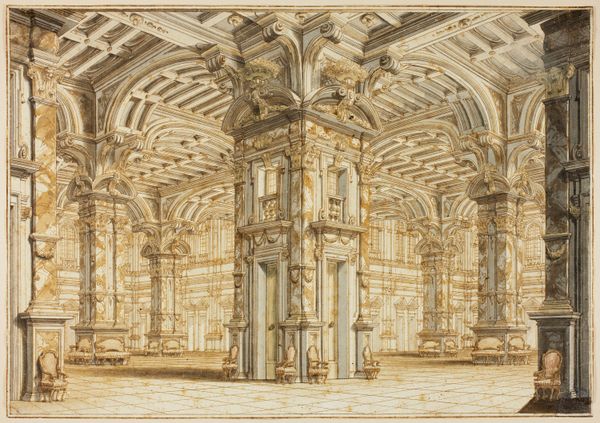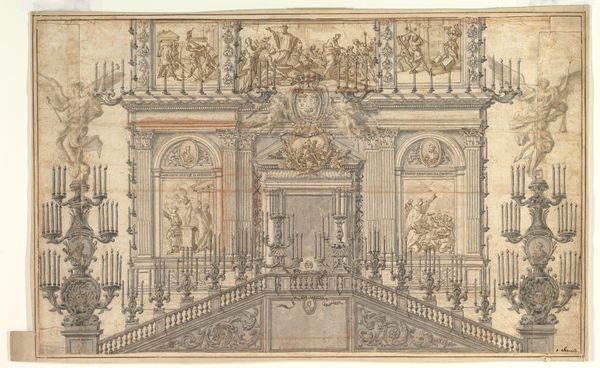
drawing, ink
#
architectural sketch
#
drawing
#
baroque
#
perspective
#
ink
Copyright: Public Domain
Curator: First impression: it’s breathtaking! So theatrical, with a kind of cool, serene vastness. I'm struck by how meticulously every detail is rendered; it's like a dreamscape made of stone. Editor: Indeed. What we're seeing is "Design for a Stage Set," a drawing rendered in ink by Pietro Righini sometime between 1688 and 1742. It resides here at the Metropolitan Museum of Art. I can't help but notice how, even as a black and white drawing, Righini manages to convey opulence and depth through sheer architectural complexity. The symbolism here is overwhelming! Curator: I agree, the complexity is fascinating! I see all of these columns, each crowned with cherubic figures… They're so buoyant; you'd think they’d start singing any minute. This is the Baroque spirit in full song—ornamentation as a means to access the divine, you know? The stage becomes a metaphor for our own lives: we're all players on a grand, decorative stage! Editor: Absolutely. Note also the obsessive use of perspective here: everything leads the eye deeper and deeper into an almost endless series of receding arches and staircases, leading ultimately… to where, exactly? Is it earthly power, or divine enlightenment? These designs harken back to the teatro della memoria or "theater of memory," as imagined by Renaissance thinkers such as Giulio Camillo. That artifice served as a symbolic model for the human mind! Righini gives us a template of cultural memory. Curator: It makes you wonder, doesn’t it, what spectacles would have been mounted within such a space? Were the dramas equally grand? The scale is truly impressive—the set dwarves the actors we might imagine within it. The play becomes almost incidental, a mere excuse for the overwhelming presence of the architecture itself. Editor: Or, conversely, is it a means of elevating the actor, placing them within a visual ecosystem ripe with symbolism, amplifying their significance in the process? Either way, this drawing, and others like it, capture a moment of cultural transformation as Baroque theatrics exploded across the European landscape. Curator: Well, thanks for sharing your expertise; I hadn’t thought about all that hidden symbolism, and now this artwork seems even more magical, almost like peering into the past. Editor: And for me, thinking about your impressions, the sense of vastness... helped solidify how, ultimately, design creates these pathways to connect, even now.
Comments
No comments
Be the first to comment and join the conversation on the ultimate creative platform.
